The Genesis of Feminism: A Historical Perspective
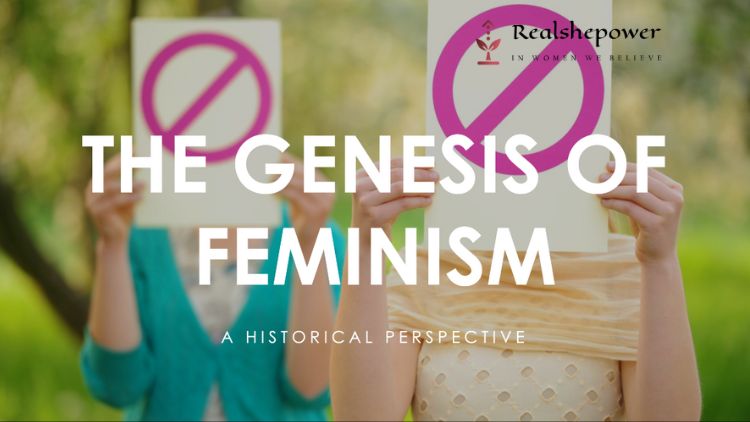

Feminism, at its core, is the belief in the social, political, and economic equality of the sexes. It is a multifaceted movement that has evolved over centuries, shaped by the socio-political contexts of different eras and regions. This article delves deep into the genesis of feminism, tracing its roots and examining its evolution over time.
Table of Contents
Ancient Beginnings
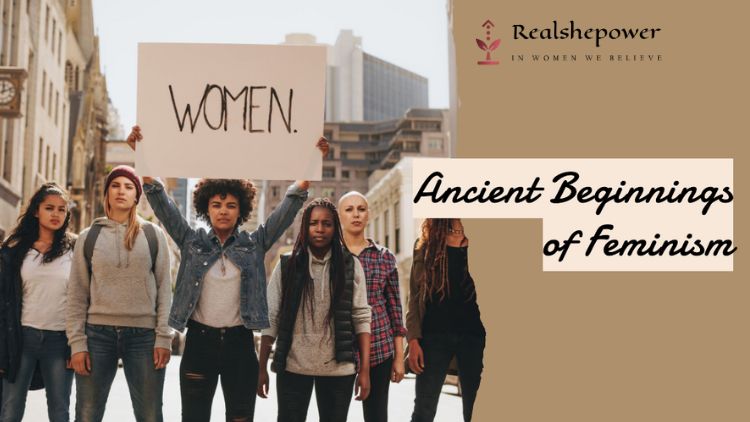
The roots of feminism, though not always termed as such, can be traced back to ancient civilizations. These early societies had their own ways of grappling with gender roles, women’s rights, and the concept of equality. Let’s delve deeper into the ancient beginnings of feminist thought.
Ancient Egypt:
- Queens and Pharaohs: Ancient Egypt was one of the few ancient civilizations where women could rule with almost equivalent authority as men. Queens like Hatshepsut and Cleopatra weren’t just consorts but rulers in their own right. They defied traditional gender roles, showcasing leadership and power.
- Legal Rights: Egyptian women enjoyed more freedoms and rights compared to their counterparts in other ancient civilizations. They could own property, initiate divorce, and even serve as witnesses in court.
Ancient Greece:
- Literary Voices: While ancient Greek society was predominantly patriarchal, there were exceptions in literature. Works like Lysistrata by Aristophanes, where women stage a sexual strike to force men to end a war, offer glimpses of female agency and resistance.
- Philosophical Thought: As mentioned, Plato, in his work The Republic, argued for the potential equality of men and women. He believed that women, given the same education as men, could achieve the same societal roles, even as rulers.
Ancient India:
- Vedic Period: The early Vedic texts, composed around 1500 BCE, indicate a more equitable status for women. Women had the right to education, and there were female scholars known as “rishikas.”
- Epic Narratives: The epics Mahabharata and Ramayana, while reflecting the patriarchal norms of their times, also contain narratives of strong, assertive women like Draupadi and Sita, who question and challenge those norms.
Ancient Rome:
- Legal Strides: Over time, Roman women began to gain more rights, especially in terms of property ownership. By the late Roman Republic, women could own and bequeath property, though they still lacked public and political rights.
- Public Presence: Women like Cornelia, the mother of the Gracchi brothers, and Fulvia, who played a significant role in Roman politics during the late Republic, showcased the potential for female influence in public spheres.
Ancient China:
- Confucianism: While Confucianism often reinforced traditional gender roles, there were exceptions. Ban Zhao, a renowned female historian and scholar of the Han dynasty, wrote “Lessons for Women,” which, while advocating for women’s subservience, also emphasized the importance of educating girls.
- Poetic Expressions: Throughout various Chinese dynasties, female poets like Li Qingzhao expressed their perspectives on love, loss, and life, providing insights into women’s inner worlds.
While the ancient world was largely male-dominated, it wasn’t devoid of feminist undertones. The voices of women, though often suppressed, found ways to echo through time, laying the groundwork for the more organized feminist movements that would emerge centuries later. These ancient beginnings remind us that the quest for gender equality is as old as civilization itself.
The Middle Ages: A Deeper Dive into Women’s Voices and Resistance
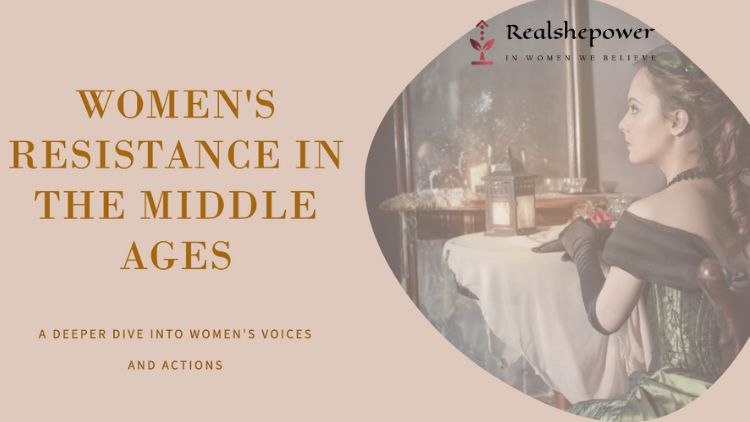
The Middle Ages, spanning roughly from the 5th to the late 15th century, is often depicted as a time of darkness and stagnation, especially concerning women’s rights. However, this period was more nuanced than commonly portrayed. While women’s rights were indeed limited, there were notable exceptions, voices of dissent, and instances of female empowerment.
Societal Context
The societal structure of the Middle Ages was predominantly feudal. The Church played a significant role in shaping societal norms, and its teachings often emphasized traditional gender roles. Women were largely seen as inferior to men, both intellectually and morally. Their primary roles were those of wives, mothers, and caretakers.
Women in Religion
Despite the overarching patriarchal structure, the Church provided some women with opportunities for education and leadership:
- Nunneries: Convents and nunneries were places where women could receive an education and escape the traditional roles of marriage and motherhood. Some women became influential abbesses, managing vast estates and wielding significant power.
- Mystics and Visionaries: Women like Julian of Norwich, Hildegard of Bingen, and Margery Kempe were recognized for their spiritual insights and writings. Their works provide a rare glimpse into the spiritual and intellectual lives of medieval women.
Women in Literature
While much of medieval literature was written by men and for a male audience, there were exceptions:
- Trobaritz: In the courts of Occitania (modern-day southern France), women known as “trobaritz” composed and performed songs of courtly love, offering a female perspective in a genre dominated by men.
- The “Lais” of Marie de France: Marie de France, a medieval poetess, wrote narrative poems that often featured strong female characters and explored themes of love, transformation, and fate.
Women and Work
Contrary to popular belief, women in the Middle Ages did work outside the home:
- Guilds: While many guilds excluded women, some allowed them to participate, especially if they were widows inheriting their husband’s business. Women were active in professions like brewing, baking, and cloth-making.
- Agriculture: In rural areas, women worked alongside men in farming. They were responsible for tasks like milking cows, making cheese, and tending to poultry.
Voices of Dissent
While the Middle Ages was a patriarchal era, there were women who resisted societal norms:
- Christine de Pizan: As mentioned previously, she was a writer who defended women against misogynistic attitudes in her work “The Book of the City of Ladies.”
- Queens and Noblewomen: Some women, by virtue of their noble birth, wielded significant power. Eleanor of Aquitaine, for instance, was one of the most powerful and influential women of her time, governing vast territories in France and England.
The Middle Ages was undoubtedly a challenging time for women, with societal structures and norms often limiting their rights and roles. However, it was also a period of complexity and change. Throughout this era, women found ways to navigate societal constraints, make their voices heard, and contribute to their communities in meaningful ways. Their stories, though sometimes overlooked, are an essential part of the rich tapestry of medieval history.
The Renaissance and Enlightenment: Catalysts for Feminist Thought
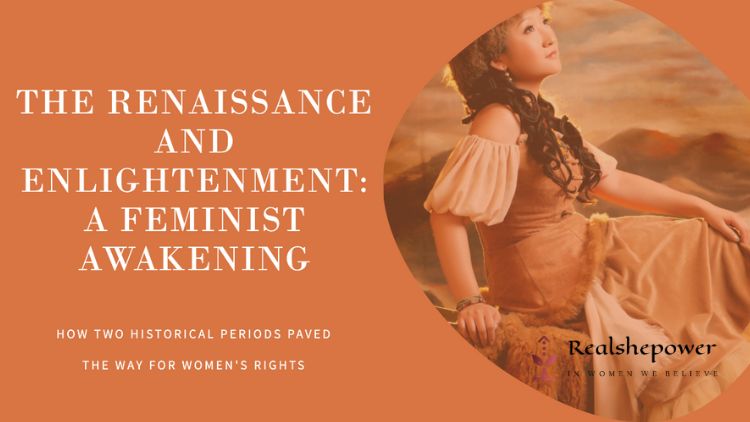
The Renaissance and Enlightenment periods, spanning from the 14th to the 18th centuries, were transformative epochs in the history of human thought. These eras, with their emphasis on humanism, individual rights, and scientific inquiry, laid the groundwork for the feminist ideologies that would emerge in subsequent centuries.
The Renaissance: A Rebirth of Humanism
The Renaissance, which began in Italy in the late Middle Ages, marked a “rebirth” of art, culture, and intellectual pursuits. This period saw a resurgence in the study of classical Greek and Roman texts, which celebrated human potential and achievements.
- Women in the Renaissance: While the Renaissance celebrated human potential, it was primarily male potential. Women were largely excluded from the public sphere, including the arts and sciences. However, some women, like the Venetian artist Artemisia Gentileschi or the writer Christine de Pizan, managed to break through these societal barriers and achieve recognition in their respective fields.
- Humanism’s Impact: The humanist movement, central to the Renaissance, emphasized the value and agency of individual humans. This philosophy, which championed the potential of the individual, would later provide a foundation for arguments against the systemic oppression of women.
The Enlightenment: The Age of Reason
The Enlightenment, often referred to as the “Age of Reason,” was a cultural and intellectual movement that emphasized reason, science, and individual rights. It challenged traditional authority structures, advocating for freedom, democracy, and equality.
- Rationality and Rights: Enlightenment thinkers believed that through reason, humans could progress and better society. This emphasis on rational thought and individual rights would become crucial for later feminist arguments. If all humans were rational beings, then denying women rights based on their gender was not only unjust but also irrational.
- Prominent Female Thinkers: While the Enlightenment had its share of male philosophers like John Locke and Voltaire, women too began to engage in serious intellectual discourse. Writers like Mary Astell advocated for better educational opportunities for women, arguing that they were just as capable of rational thought as men.
Mary Wollstonecraft: A Pioneer of Feminist Philosophy
In the backdrop of these transformative periods, Mary Wollstonecraft emerged as one of the most influential figures in early feminist thought. Her groundbreaking work, “A Vindication of the Rights of Woman” (1792), was a direct response to the socio-political climate of her time.
- Challenging Prevailing Notions: Wollstonecraft boldly contested the widely accepted notion of women’s inferiority. She argued that any perceived inferiority was not a result of inherent qualities but rather a lack of education. Women, she posited, appeared to be inferior only because society had denied them the same educational opportunities afforded to men.
- Advocacy for Education: Wollstonecraft’s emphasis on education was revolutionary. She believed that with equal education, women could contribute just as effectively to society as their male counterparts. This idea was radical for its time, challenging deeply entrenched societal norms.
- Legacy: Wollstonecraft’s writings laid the groundwork for future feminist movements. Her emphasis on education and her challenges to traditional gender roles would resonate with and inspire countless women and men in the centuries that followed.
The Renaissance and Enlightenment, with their emphasis on human potential, individual rights, and reason, provided fertile ground for the emergence of feminist thought. Figures like Mary Wollstonecraft, building on the ideas of these periods, paved the way for the feminist movements that would follow, forever changing the course of history.
The 19th Century: The First Wave of Feminism
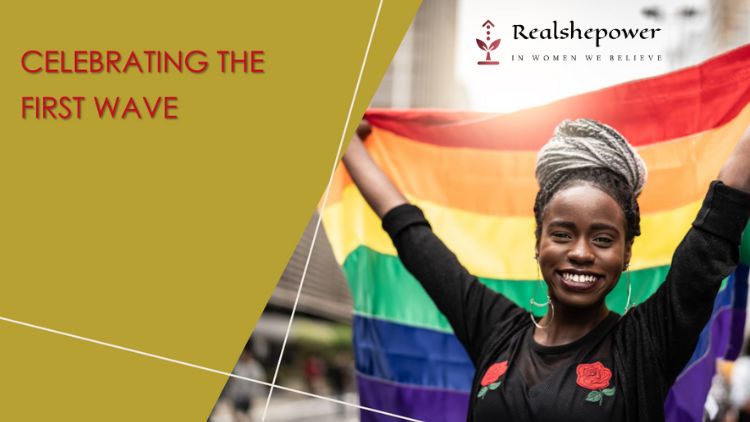
The 19th century marked a pivotal period in the history of women’s rights. Often referred to as the “First Wave of Feminism,” this era saw a surge in feminist activity, primarily in Europe and the United States. The movement’s primary focus was on legal issues, especially women’s suffrage, but it also addressed broader inequalities and sought to challenge societal norms.
The Socio-Political Landscape
The 19th century was a time of significant social and political change. The Industrial Revolution transformed economies and societies, leading to urbanization and the emergence of new classes. As societies transformed, traditional roles and structures were questioned, providing fertile ground for the feminist movement.
Key Events and Milestones
- The Seneca Falls Convention (1848): Often considered the birthplace of the women’s rights movement, this convention was held in Seneca Falls, New York. Organized by Elizabeth Cady Stanton and Lucretia Mott, it saw the drafting of the Declaration of Sentiments, which outlined the injustices faced by women and set the agenda for the feminist movement.
- Publication of “A Vindication of the Rights of Woman” (1792): Written by Mary Wollstonecraft, this groundbreaking work argued that women were not naturally inferior to men but appeared to be because they lacked education. It called for equal education opportunities for women.
- Formation of Women’s Suffrage Organizations: In both the U.S. and the UK, organizations dedicated to women’s suffrage were established. Leaders like Susan B. Anthony, Elizabeth Cady Stanton, and Emmeline Pankhurst played pivotal roles in these movements.
- The Married Women’s Property Acts: Passed in various jurisdictions throughout the century, these acts allowed women to own property in their own name, providing them with increased economic independence.
Challenges and Backlash
The first wave feminists faced significant opposition. Many saw their demands as radical and believed they threatened the social fabric. Religious, political, and societal leaders often opposed their efforts, arguing that women’s roles were in the home, as wives and mothers.
Legacy of the First Wave
The first wave laid the groundwork for future feminist movements. While it had its limitations and was often exclusive in nature (primarily focusing on the concerns of white, middle-class women), its achievements were significant. The 19th Amendment to the U.S. Constitution, ratified in 1920, granting women the right to vote, stands as a testament to the movement’s success.
The 20th Century: The Second Wave of Feminism
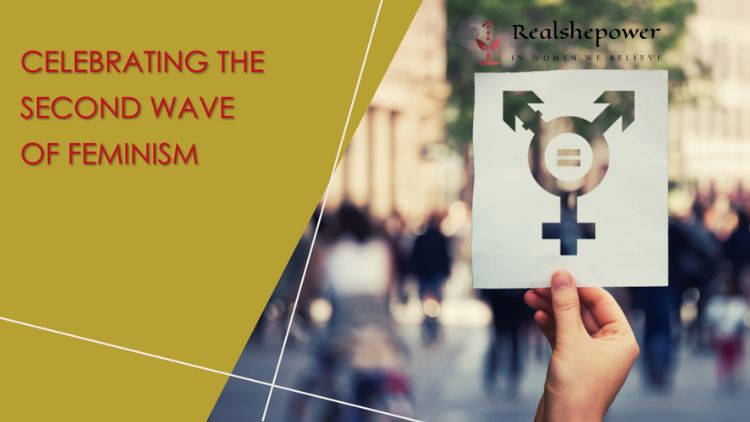
The second wave of feminism, spanning from the 1960s to the early 1990s, marked a significant shift from the earlier focus on suffrage and legal rights. This wave broadened the conversation to encompass a range of issues, including sexuality, family, the workplace, reproductive rights, and de facto inequalities. It was a period of intense activism, intellectual fervor, and societal transformation.
Roots of the Second Wave
The post-World War II era saw women being pushed back into domestic roles after having taken on traditionally male jobs during the war. This return to the “cult of domesticity” created a sense of unease, as many women felt unfulfilled in these restrictive roles.
- Betty Friedan’s “The Feminine Mystique” (1963): Often credited as the catalyst for the second wave, Friedan’s groundbreaking book tapped into the collective malaise of American housewives. She identified “the problem that has no name” — the widespread unhappiness of women forced into restrictive roles. Her work resonated with many, leading to a surge in feminist activism.
Key Movements and Achievements
- Sexuality and Body Autonomy: The second wave saw the rise of discussions around sexuality, including the right to abortion. The landmark Roe v. Wade decision in 1973 was a monumental victory, legalizing abortion in the U.S. and granting women greater control over their bodies.
- Workplace Rights: The second wave tackled workplace discrimination head-on. The Equal Pay Act of 1963 aimed to abolish wage disparity based on sex. Title IX, passed in 1972, prohibited sex-based discrimination in federally funded education and activities, leading to a revolution in women’s sports.
- The Rise of Women’s Studies: Universities across the U.S. began to offer Women’s Studies programs, providing academic spaces for the exploration of women’s roles in history, culture, and society.
- Legal Achievements: The Civil Rights Act of 1964, particularly Title VII, prohibited employment discrimination based on race, color, religion, sex, or national origin. This was a significant step forward in ensuring workplace equality.
Challenges and Critiques
While the second wave achieved significant advancements, it was not without its challenges:
- Critiques of Exclusivity: The movement, particularly in its early years, was criticized for centering on the experiences of white, middle-class women, often sidelining the concerns of women of color, working-class women, and LGBTQ+ individuals.
- The “Lavender Menace”: Lesbian activists felt marginalized within the feminist movement. Their concerns culminated in the “Lavender Menace” protest in 1970, pushing for greater inclusivity within feminist ranks.
- The Sex Wars: By the 1980s, the feminist movement faced internal divisions over issues related to sexuality, including the role of pornography and BDSM in feminist discourse.
Legacy of the Second Wave
The second wave laid the groundwork for contemporary feminist thought. While it faced criticisms and internal divisions, its achievements in reshaping societal attitudes and legal frameworks were profound. It set the stage for the third wave of feminism, which would further expand the conversation to be more inclusive and intersectional.
In essence, the second wave of feminism was a transformative period that challenged societal norms, reshaped legal frameworks, and ignited a global conversation about gender equality. Its legacy is still felt today, as modern feminists build upon the foundations laid during this pivotal era.
The Third Wave and Beyond

The third wave of feminism, which began in the early 1990s, marked a significant shift from the earlier waves. While the first wave focused on suffrage and legal rights and the second wave broadened to issues like sexuality, workplace rights, and reproductive rights, the third wave brought a more nuanced and intersectional approach to the feminist movement. Here’s a closer look at the evolution and key aspects of the third wave and the subsequent developments in feminism.
Emergence of the Third Wave
The third wave emerged as a response to the perceived failures of the second wave and to the backlash against its initiatives. It was sparked by a younger generation of women who sought to redefine what it meant to be a feminist.
- Anita Hill’s Testimony: One of the pivotal moments that catalyzed the third wave was the 1991 televised testimony of Anita Hill during the U.S. Supreme Court nomination hearings for Clarence Thomas. Hill’s brave confrontation of workplace sexual harassment brought the issue into living rooms across America.
- The Riot Grrrl Movement: This grassroots movement combined feminist consciousness with punk’s raw energy. Bands like Bikini Kill and Bratmobile used music to address issues like rape, domestic abuse, sexuality, and female empowerment.
Key Characteristics and Themes
- Intersectionality: The third wave introduced the concept of intersectionality, emphasizing that women’s experiences of oppression are shaped not only by their gender but also by other factors like race, class, and sexual orientation. Kimberlé Crenshaw, a civil rights advocate and scholar, coined the term to describe how different forms of discrimination can intersect and overlap.
- Reclaiming Femininity: While the second wave often rejected traditional notions of femininity, the third wave saw many feminists embracing and reclaiming aspects of femininity, from wearing makeup and high heels to embracing roles traditionally seen as “feminine.”
- Sexuality and Body Positivity: The third wave also brought a more open exploration of sexuality. It challenged heteronormative views of sexuality and embraced LGBTQ+ rights as integral to the feminist cause. Body positivity and the fight against body shaming also became central themes.
Beyond the Third Wave: The Fourth Wave and Digital Feminism
The advent of the internet and social media has given rise to what many consider the “fourth wave” of feminism. This wave is characterized by its digital activism, with hashtags like #MeToo and #TimesUp leading global movements against sexual harassment and assault.
- Digital Activism: Online platforms have democratized feminism, allowing for a more diverse range of voices to be heard. Movements like #BringBackOurGirls, following the kidnapping of 276 schoolgirls in Nigeria, showcased the power of digital activism.
- Continued Emphasis on Intersectionality: The fourth wave has built on the third wave’s emphasis on intersectionality, with a heightened focus on representing and advocating for the rights of marginalized groups, including transgender women, women of color, and women from the Global South.
- Challenges to Traditional Gender Norms: This wave also sees a challenge to binary notions of gender, recognizing and advocating for non-binary, genderqueer, and transgender rights.
FAQs
When did the term “feminism” first appear?
The word “feminism” first appeared in the 1870s but was popularized during the first wave of the women’s movement in the early 20th century.
Is feminism only a Western concept?
No. While the term originated in the West, similar movements advocating for women’s rights have existed globally. For instance, in India, the reformist Raja Ram Mohan Roy campaigned against women’s oppression in the 19th century.
What is “intersectional feminism”?
Coined by Kimberlé Crenshaw, it describes how race, class, gender, and other individual characteristics intersect and overlap. It emphasizes that feminism must address the different layers of identity that affect women’s experiences.
Why are there different “waves” of feminism?
The “waves” metaphor is used to describe the larger, sweeping periods of feminist activity and thought over time. Each wave has its distinct themes, challenges, and achievements, reflecting the socio-cultural context of its era.
What is ecofeminism?
Ecofeminism is a branch of feminism that sees a connection between the exploitation of women and the degradation of nature. It argues that the patriarchy’s dominance over women parallels the dominance over nature, advocating for environmental and gender justice.
How does feminism intersect with LGBTQ+ rights?
Feminism and LGBTQ+ rights both challenge traditional gender norms and roles. Intersectional feminism, in particular, emphasizes the importance of understanding and advocating for the rights of LGBTQ+ individuals as part of the broader fight for gender equality.
Is it possible for men to be feminists?
Yes, absolutely. Feminism is about advocating for gender equality, and anyone, regardless of gender, can support and promote these ideals.
What is the difference between feminism and womanism?
Womanism, a term coined by Alice Walker, focuses on the unique experiences and struggles of Black women, emphasizing race and class as integral parts of the conversation on gender equality. While feminism seeks gender equality at large, womanism addresses the intersections of racism and sexism faced by Black women.
How has social media influenced modern feminism?
Social media has given a platform for feminist discourse, allowing for global conversations, grassroots organizing, and the rapid spread of feminist ideologies. Movements like #MeToo and #TimesUp gained traction globally thanks to social media.
What is the role of literature in the feminist movement?
Literature has been instrumental in shaping and promoting feminist thought. From early works like Mary Wollstonecraft’s “A Vindication of the Rights of Woman” to modern novels, essays, and poetry, literature provides a medium to explore, challenge, and discuss gender norms and ideals.
Why is there criticism or backlash against feminism?
Like many social movements, feminism faces opposition from those who feel threatened by its goals or misunderstand its principles. Some see it as challenging traditional values, while others may have misconceptions about its aims.
How does feminism address issues faced by women in developing countries?
Global or transnational feminism seeks to address and support the rights of women in developing countries, focusing on issues like education, reproductive rights, and economic opportunities. It emphasizes solidarity across borders while respecting cultural differences.
These FAQs provide a deeper understanding of the complexities and nuances of feminism, reflecting its multifaceted nature and its relevance in various spheres of life.
Conclusion
Feminism, as a movement and ideology, has a rich and varied history. From its ancient beginnings to its modern-day iterations, it has continually evolved, reflecting the changing socio-political landscapes of different eras. As society progresses, feminism will undoubtedly continue to adapt, ensuring that the fight for gender equality remains relevant and effective.
You can now write for RealShePower and be a part of the community. Share your stories and opinions with us here.
